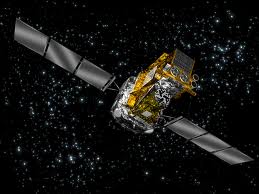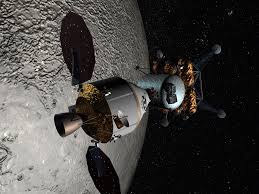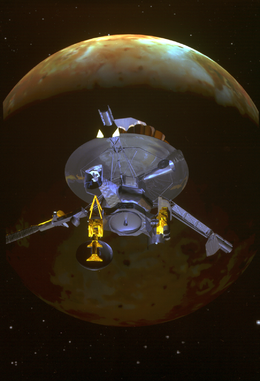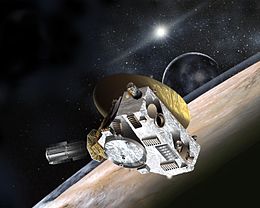



- Home1
- Solar System
- Universe
- Mercury
- Earth
- Mars
- Jupiter
- Saturn
- Uranus
- Neptune
- Venus
- Pluto
- Gravity
- Force
- Acceleration
- Radiation
- Dark Energy & Dark Matters
- Laws of Universe
- Black Hole
- Intern Article / Paper Publication
- Galaxy
- guestbook
- chatroom
- Blogger
- Membership

SPACE CRAFTS AND SPACE HEROS

GALILEO
(Mission duration7.75 years ) – first Jupiter orbiter+descent
probe
Galileo was an unmanned NASA spacecraft which studied the
planet Jupiter and its moons, as well as several other solar system
bodies. Named after the astronomer Galileo Galilei, it consisted of
an orbiter and entry probe. It was launched on October 18, 1989,
carried by Space Shuttle Atlantis, on the STS-34 mission. Galileo
arrived at Jupiter on December 7, 1995, after gravitational assist
flybys of Venus and Earth, and became the first spacecraft to orbit
Jupiter. It launched the first probe into Jupiter, directly
measuring its atmosphere.[1] Despite suffering major antenna
problems, Galileo achieved the first asteroid flyby, of 951 Gaspra,
and discovered the first asteroid moon, Dactyl, around 243 Ida. In
1994, Galileo observed Comet Shoemaker–Levy 9's collision with
Jupiter.

NEW
HORIZONS
(Mission duration :Primary mission: 9.5 years 8 years, 5 months and
6 days elapsed )
New Horozon was launched on 19 January 2006 from Cape Canaveral.
Launched directly into an Earth-and-solar-escape trajectory with an
Earth-relative velocity of about 16.26 km/s (58,536 km/h; 36,373
mph), it set the record for the highest velocity of a human-made
object from Earth. New Horizons should perform a flyby of the Pluto
system on 14 July 2015.After
a brief encounter with the asteroid 132524 APL, New Horizons
proceeded to Jupiter making its closest approach on 28 February
2007 at a distance of 2.3 million kilometres (1.4 million miles)
from the planet. The Jupiter flyby provided a gravitational assist
increasing the probe's speed by 14,000 kilometres per hour (9,000
mph). The encounter was also used as a general test of New
Horizons' scientific capabilities, returning data about the
planet's atmosphere, moons and magnetosphere. After Jupiter, the
probe continued its voyage towards Pluto, much of which will be
spent in hibernation mode to preserve onboard systems. New Horizons
photographed Pluto for the first time in September 2006, followed
by an image that distinguished Pluto and its moon Charon as two
separate objects in July 2013. As of 30 May 2014, its distance from
Pluto was about 3.26 AU or 488,000,000 km or 303,000,000 miles
(about 28.65 AU or 4.286×109 km from Earth), with radio signals
taking approximately 4 hours to travel to the spacecraft from Earth
(an 8 hour round trip).

Buzz
Aldrin
(born Edwin Eugene Aldrin, Jr., January 20, 1930) is an engineer and former American astronaut, and the second person to walk on the Moon. He was the lunar module pilot on Apollo 11, the first manned lunar landing in history. He set foot on the Moon at 03:15:16 (UTC) on July 21, 1969, following mission commander Neil Armstrong. He is also a retired colonel in the United States Air Force (USAF) and a Command Pilot.
Time in space :
12 days , 1 hrs,52 min
Selection : 1969 NASA Group
Missions : Gamini12
,Apollo 11


Jupiter
Jupiter
is the fifth planet from the Sun and the largest planet in the
Solar System. It is a gas giant with mass one-thousandth of that of
the Sun but is two and a half times the mass of all the other
planets in the Solar System combined.
Radius:
69,911 km
Mass: 1.898E27 kg (317.8 Earth mass)
Surface area: 61,418,738,571 km²
Distance from Sun: 778,500,000 km
Gravity: 24.79 m/s²
The largest planet in the solar system, Jupiter, is 318 times more
massive than Earth. With at least 63 moons, strong winds and
massive storms.
